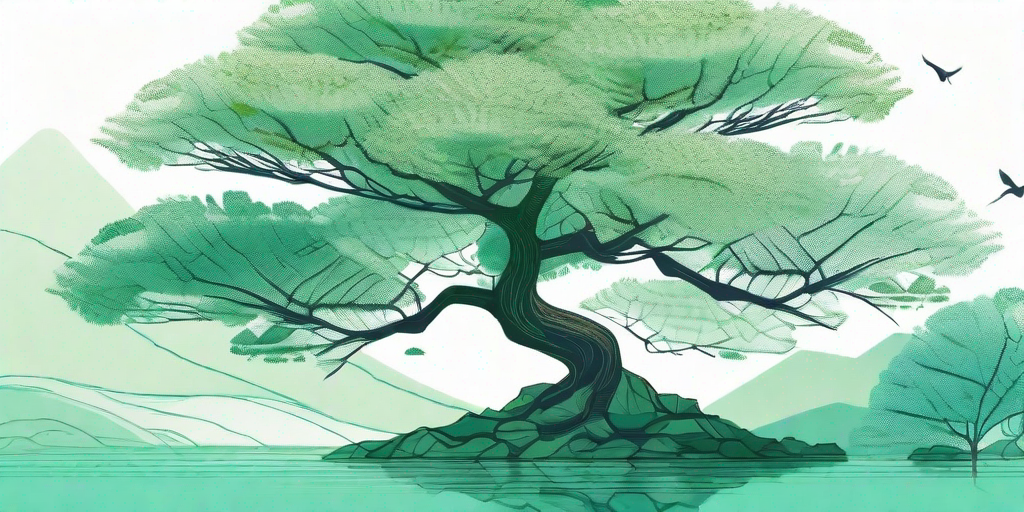
Ah, the Japanese Elm tree, a true marvel of nature. With its majestic height, lush foliage, and intricate branching patterns, it's no wonder that this tree is a favorite among garden enthusiasts and arborists alike. But the beauty of the Japanese Elm extends beyond its physical appearance. This tree is also known for its resilience, adaptability, and a host of other benefits that make it a fantastic addition to any landscape.
The Beauty of Japanese Elm Trees
Physical Characteristics
The Japanese Elm tree, scientifically known as Ulmus davidiana var. japonica, is a deciduous tree that can grow up to 20 meters tall. It boasts a broad, round crown and a trunk that can reach up to 1 meter in diameter. But the real showstopper is its foliage. The leaves are dark green, oval-shaped, and have a serrated edge, creating a dense canopy that provides ample shade during the hot summer months.
And let's not forget about the bark. The bark of the Japanese Elm is a sight to behold, with its greyish-brown color and deeply furrowed texture. It's like the tree's very own fingerprint, unique and captivating.
Seasonal Changes
As a deciduous tree, the Japanese Elm goes through a stunning transformation with each passing season. In spring, it sprouts fresh, vibrant green leaves. Come summer, these leaves darken, providing a cool, shady retreat. Autumn turns the foliage into a fiery display of yellows, oranges, and reds before the leaves fall off in winter, revealing the tree's intricate branching pattern against the stark winter sky.
It's like having four different trees in one, each season offering a new look to admire and appreciate.
The Benefits of Japanese Elm Trees
Environmental Benefits
Japanese Elm trees are not just pretty to look at; they're also quite beneficial to the environment. They help improve air quality by absorbing pollutants and releasing oxygen. They also act as natural air conditioners, their shade helping to reduce the need for artificial cooling during the hot summer months.
Moreover, these trees play a crucial role in supporting biodiversity. They provide habitat and food for a variety of birds, insects, and small mammals. So, by planting a Japanese Elm, you're not just beautifying your landscape, you're also contributing to the local ecosystem.
Health and Wellness Benefits
Did you know that being around trees can improve your health and well-being? It's true! Research has shown that spending time in green spaces can reduce stress, improve mood, and even boost cognitive function. And the Japanese Elm, with its lush canopy and calming presence, is the perfect tree for creating a tranquil, nature-filled oasis.
Plus, the act of planting and caring for a tree can be quite therapeutic. It's a great way to get some exercise, spend time outdoors, and engage in a rewarding hobby.
How to Care for Your Japanese Elm Tree
Planting
When it comes to planting a Japanese Elm, location is key. These trees prefer full sun to partial shade and well-drained soil. They're also quite adaptable and can tolerate a range of soil types, from sandy to clay.
Once you've chosen the perfect spot, dig a hole that's twice as wide and just as deep as the root ball. Place the tree in the hole, making sure the top of the root ball is level with the ground. Backfill the hole, water thoroughly, and voila! You've just planted a Japanese Elm.
Maintenance
Japanese Elm trees are relatively low-maintenance. They require moderate watering, especially during dry periods. It's also a good idea to mulch around the base of the tree to conserve moisture and suppress weeds.
As for pruning, it's best to do this during the dormant season. Pruning helps maintain the tree's shape, remove dead or diseased branches, and promote healthy growth.
Frequently Asked Questions
- Are Japanese Elm trees disease-resistant?
Yes, Japanese Elm trees are known for their resistance to Dutch Elm Disease, a fungal disease that has decimated Elm populations in many parts of the world.
- How fast do Japanese Elm trees grow?
Japanese Elm trees have a moderate to fast growth rate, typically growing 1 to 2 feet per year.
- Can I grow a Japanese Elm tree in a pot?
Yes, Japanese Elm trees can be grown in pots, making them a great choice for bonsai.
Conclusion
So there you have it, folks! The Japanese Elm tree, in all its glory. A tree that's as beautiful as it is beneficial, as resilient as it is graceful. Whether you're an arborist, a garden enthusiast, or just someone who appreciates the beauty of nature, the Japanese Elm tree is sure to captivate and inspire.
So why not branch out and explore the world of Japanese Elm trees? You might just find your new favorite tree.















